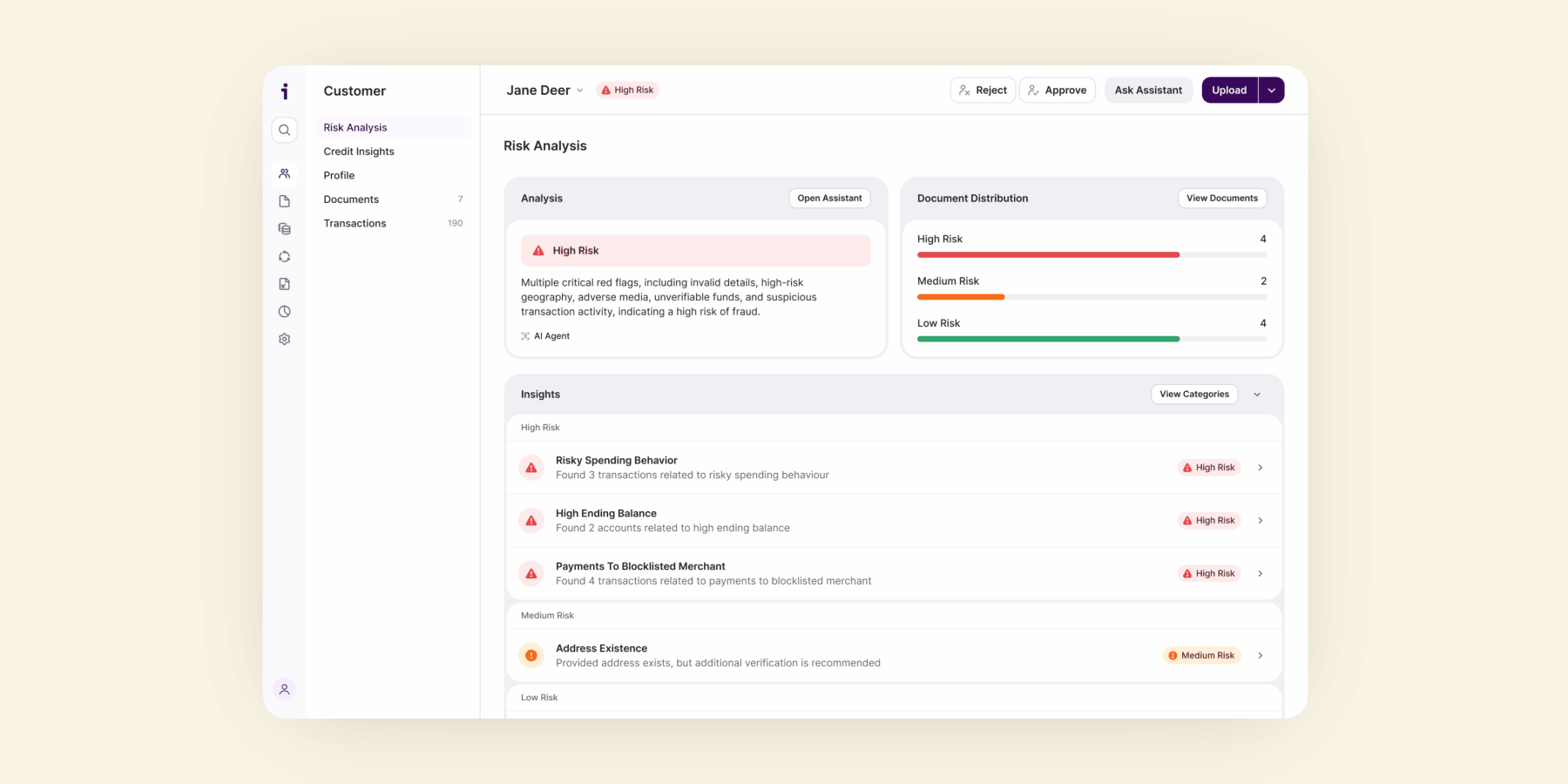How to use configurable transaction and balance insights to detect high-risk applicants
Table of Contents
[ show ]- Loading table of contents...
Stephanie Spangler
When it comes to evaluating applicants, no two banks, credit unions, or fintechs define risk in exactly the same way. That’s why we’re introducing a new feature that gives you more control over what you consider risky.
With Inscribe, you can now define your own risk rules based on the transaction and balance data in your applicants’ bank statements, so you can surface the specific red flags that matter most to your team.

How it works
With this update, you decide what’s worth flagging in your applicants’ transaction data. You can set up rules based on attributes like category, merchant, payment processor, transaction method, amount, and timeframe.
Rules can be based on either the number of transactions that match your criteria, or the percentage of transactions that match your criteria within a given timeframe.
In addition to transaction activity, you can create rules based on daily balances, like minimum or maximum balance, and average daily balance over a period of time.

All of this means you’re not stuck with a generic view of risk — you’re able to build signals that match how your team defines it.
How to use it
There are countless ways to apply this feature. Here are some examples inspired by how Inscribe customers are already putting it to work:
Risky spending behavior
Identify patterns that may indicate financial instability or elevated risk.
For example, you could flag if more than 20% of transactions in a 60 day period fall under the gambling category. You could also flag if more than 20% of transactions are tied to crypto exchanges.
Suspicious money movement
Spot transfers or patterns that may suggest circular movement or hidden activity.
For example, you could flag if self transfer transactions make up more than 30% of total transactions in a 30 day period. Or you could simply flag transactions over $10,000.
Low average balance
Surface applicants who may have a consistently low balance.
For example, you could flag if the average daily balance over a 60 day period is below a threshold your team defines.
High balance volatility
Highlight accounts where money is moving in big swings rather than staying relatively steady.
For example, you could flag if the daily balance typically varies over the last 30 days by over 40% of the average daily balance (or some threshold your team defines).
The possibilities for what you can flag are limitless.
Full control over the applicant’s risk rating
Inscribe provides a customer-level risk rating based on the holistic analysis performed across a customer’s documents, and external signals and third-party data. Each rating includes a brief, clear explanation of why it was assigned.
With this new feature, you can choose whether your custom transaction or balance signals should affect the overall rating or just appear as additional context in your review.

This gives you the flexibility to incorporate new insights gradually, test hypotheses, or use signals purely for internal review.
Configurable signals for tailored decisions
This feature gives you greater visibility and control over the specific risks you care about. With configurable signals, you can define what risky looks like in your transaction and balance data and review it in a way that fits how your team already works.
Interested in learning more? Book time with us.
About the author
Stephanie Spangler is the Head of Product Marketing at Inscribe, where she leads efforts to promote AI-driven solutions for banks, fintechs, and lenders. Stephanie is a seasoned product marketing leader with over 15 years of experience in driving go-to-market strategies for B2B software companies. As a three-time founding Product Marketer, she has successfully launched and scaled products in competitive markets. With experience as a product marketing consultant and previous leadership roles at Sendoso and Sage, Stephanie is known for her expertise in market analysis, customer insights, and strategic product positioning.
What will our AI Agents find in your documents?
Start your free trial to catch more fraud, faster.






